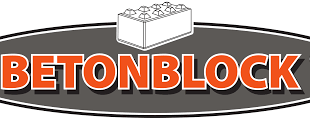The mandate for UX Design is to solve end-users problems with the use and interaction of any product or service with an empathetic approach. Earlier it was often observed that enterprise products and solutions developers weren’t very eager to embrace and incorporate UX design into the product architecture. This of course has changed for good in the long run.
Apart from solving the ultimate pain points for an organization, today’s B2B and enterprise solutions are also designed keeping in mind the ultimate employee experience. The end goal, apart from solving enterprise problems and managing heavy-duty data load, is also to increase employee productivity. UX for internal applications is as important for any consumer product, and the demand for good UX has increased multifold across industries.
However, there is much room to cover in terms of UX design adoption for enterprise and B2B solutions.
Role of UX in B2B SaaS Product
Digitization is now being embraced by corporates and non-corporates, globally. High-end SaaS solutions are being created and deployed to manage crucial business processes such as accounts, sales, marketing, HR, operations, or security.
Understandably, the competition in the B2B SaaS market is intense. But in a B2B product, the developers must always anticipate the end user’s reception towards the product so meticulously designed. Even though the buyer of the product is a business entity, the product’s end-user is an actual person who shall be interacting with the different modules and features of the software.
Hence, apart from rich and dynamic features and values, ease-of-use can become a differentiating factor for SaaS product business. The experience of any product should be seamless and require the least technical expertise. According to the App Attention Index 2021 report, 61% of users state that their expectation of digital services has changed and they will not tolerate poor performance anymore.
Incorporating UX design for complex B2B SaaS Products
Making business processes smooth, less time-consuming, and seamless are some of the major KRAs of any SaaS application. If the software is difficult to use and the complex features and design takes a long time for the end-user, it fails the entire purpose of digitization. Let’s look at some points on how UX can be incorporated in complex B2B products:
UX standards will keep evolving, and so will the functionalities and possibilities of any software. Hence, a logical UX roadmap should accompany the product development from the blueprint stage. Over time, when the product goes through changes, modifying the UX will be less challenging and cost-effective.
Frequent feedback from significant stakeholders, including the customers, end-users, sales, marketing, and support teams, helps understand the product performance. It also helps to improve future UX enhancements and gives insights into what the user will need and want.
Smooth user onboarding is highly critical for the success of any B2B solution. Despite being feature-rich and with strong technical foundations, many SaaS products fail to impact if the user finds the product too complex to use in the onboarding stage.
Concluding Notes
No amount of features and technical smartness can save a product if it is cumbersome and tastelessly designed. Functional difficulties will prevent customers from concentrating on the core tasks that the solution had promised to deliver. Investing in good UX eliminates that scenario and helps B2B solution providers to retain their customers for a longer period. Smart marketing tactics can only go as far as to convince the buyer to purchase the product, but it is only a good UX that will make the end-users stay and use the product.
By Samir Chabukswar, Founder & CEO, YUJ Designs
 Newspatrolling.com News cum Content Syndication Portal Online
Newspatrolling.com News cum Content Syndication Portal Online






